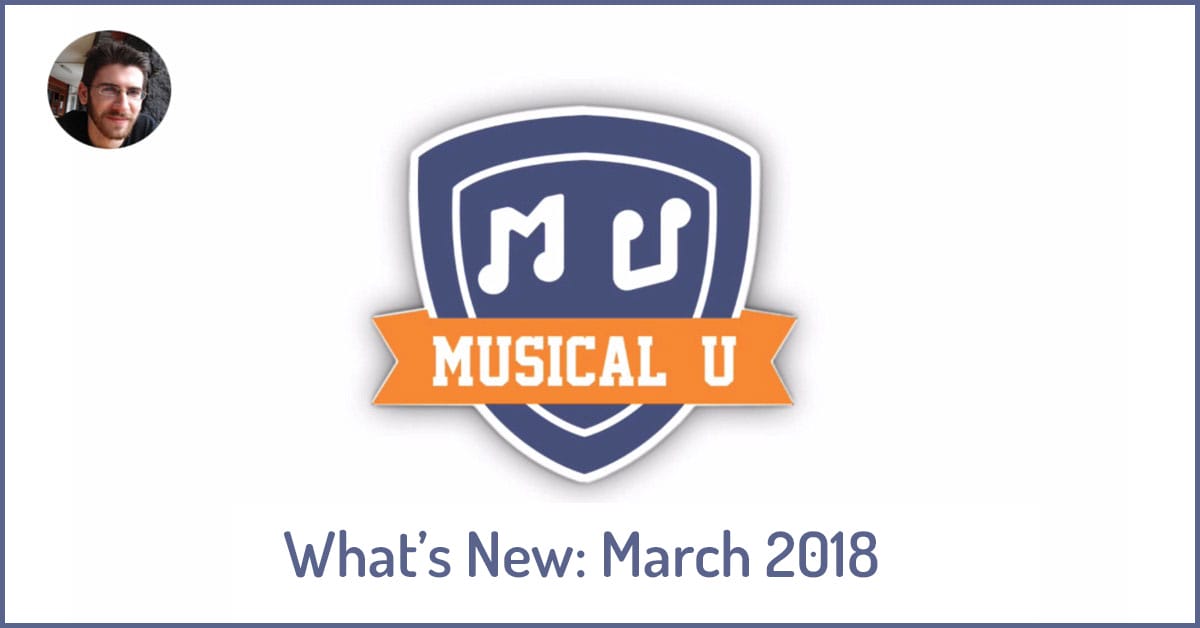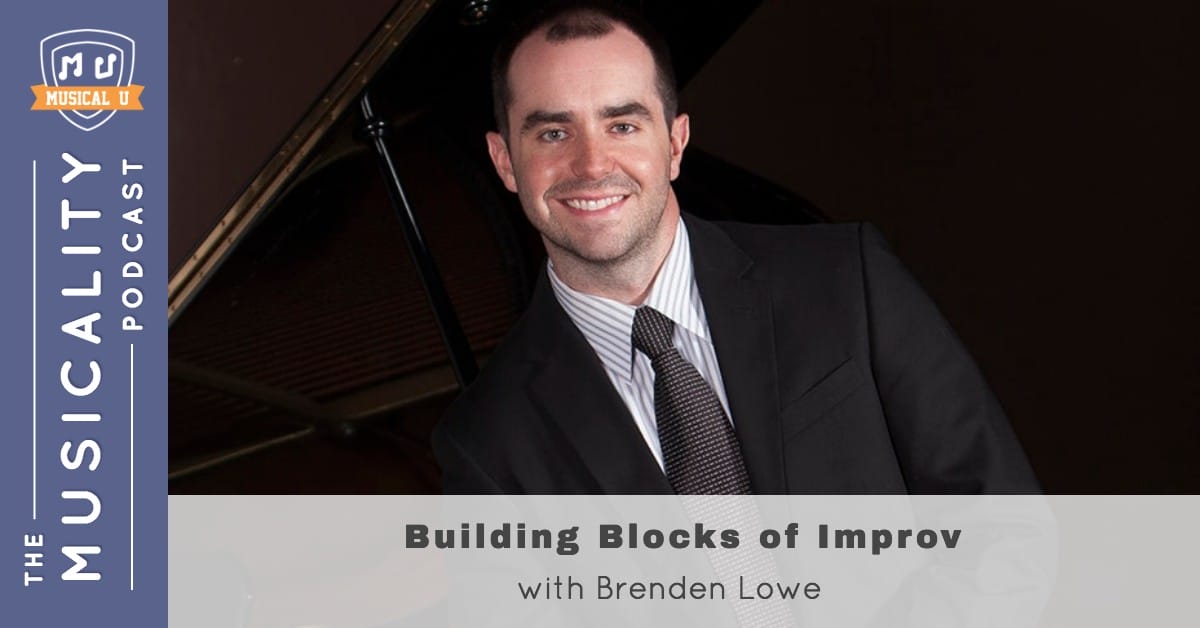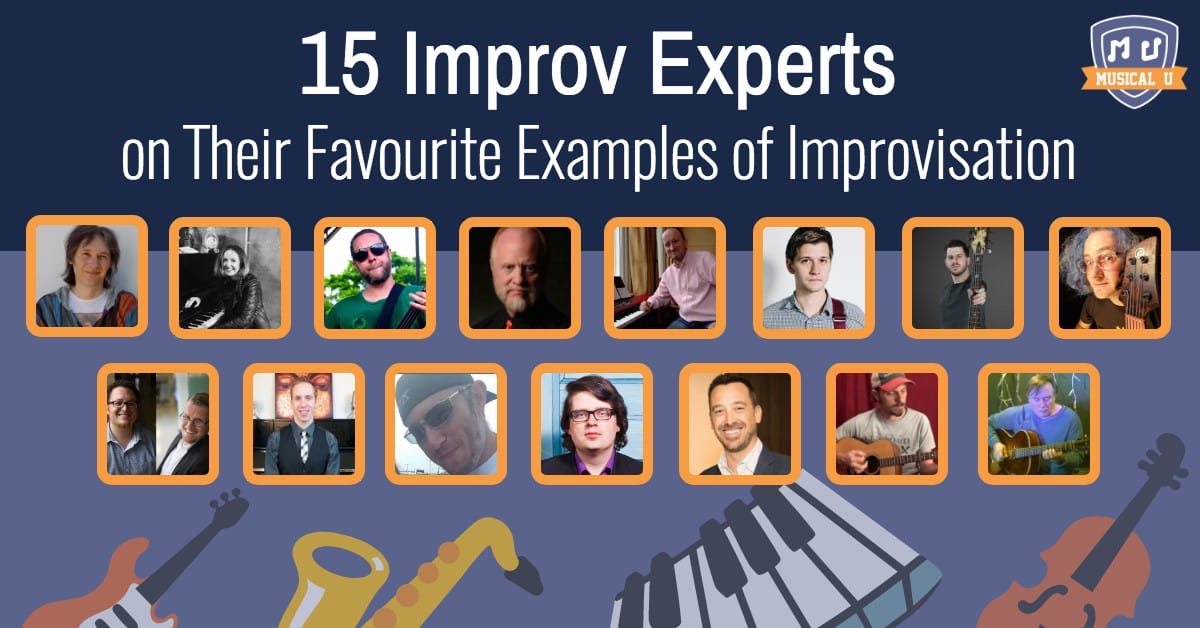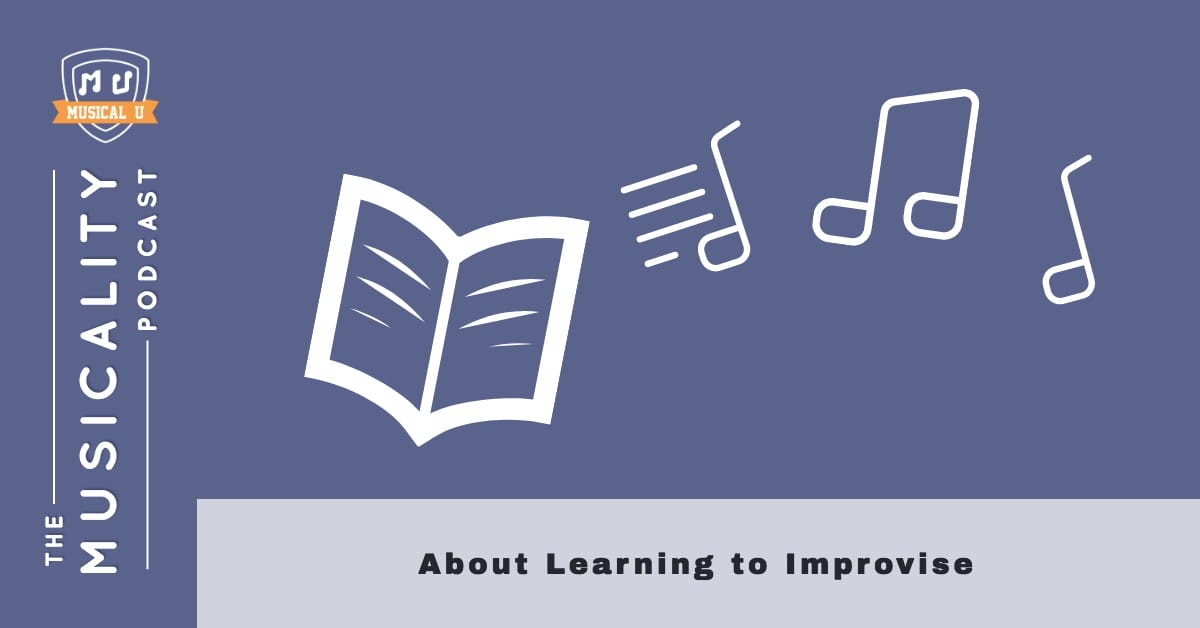This is the end…
Of Improv Month, that is!
The last month has seen us take you on a virtual journey through learning improv. We started by defining improv, and took a look at some of the musical building blocks you can use to improvise, such as melody, rhythm, and harmony.
We then zoomed out a little bit to look at the bigger picture, discussing the important role that structure, form, and phrasing play in your spontaneous compositions.
Now, in the last week of Improv Month, we’re sending you off with some inspiration and guidance for starting your improv journey. Don’t miss our interview with Brenden Lowe, a music educator who has a unique approach to teaching improv – through “building blocks” rather than rote memorization or random noodling.
To show you just how inspiring and diverse improvisation can be, we’ve asked 15 experts to share their favourite example of improvisation – and the answers range from classic solos to situational examples of improv you may not even have thought of!
We also bridge the gap from theory to practice by giving you a blueprint for starting to improvise, using the tools and knowledge we’ve shared over the course of Improv Month.
But first, let’s take a bird’s eye view of what we’ve covered this month…
Improv Month
 This month’s content has been stuffed to the absolute brim with improvisation-related wisdom.
This month’s content has been stuffed to the absolute brim with improvisation-related wisdom.
And so, we thought that we’d use What’s New in Musical U: March 2018 to recap this month’s offerings on all things improv: podcasts, training modules, resource packs, a roadmap, and more.
This recap is perfect for those wanting an overview of the content we’ve released this month, and for those craving a sneak peek on our plans for the end of improv month. Check it out!
Tools for Improv
Mastering improv is rarely a point-A-to-point-B journey – there will likely be some sidetracking and trial-and-error in learning to improvise.
Nobody knows this better than Brenden Lowe, who took traditional jazz piano lessons and found that he was no closer to being able to improvise freely and creatively after three years. Several re-evaluations, new teachers, new approaches, and a jazz performance degree later, something finally clicked – Brenden learned how to deconstruct improv into its parts, and use them to build up music.
 He now uses this concept of “building blocks” as a framework for teaching jazz piano in a way that encourages self-expression and takes the intimidation factor out of improv.
He now uses this concept of “building blocks” as a framework for teaching jazz piano in a way that encourages self-expression and takes the intimidation factor out of improv.
Listen to his improv journey and how it shaped his teaching style over at Building Blocks of Improv, with Brenden Lowe.
Brenden made a fascinating analogy when he compared learning improvisation to playing with legos. And it was quite interesting to think about how improv is a summation of multiple musical skills that are all combined to perform. Sean Packard interviewed Ralph Bowen about his approach to learning jazz improvisation, which features some lego blocks of his own.
Before Brenden even began playing jazz music, the sound and style was already deeply ingrained into his musical ear. How? For years, he had been exposed to jazz through passive listening as a child! Similarly, the Suzuki method, an ear-based approach to learning music, believes in the importance of listening. Upper Beaches Music discusses how to listen to Suzuki repertoire.
A turning point for Brenden was when he was able to learn jazz tunes and expand his repertoire. Many jazz musicians not only learn the tunes, but also listen to the solos of jazz greats that were recorded with jazz standards. This is called transcribing, and Jamie Holdroy has a 5-step method to become more effective at transcriptions.
Learning jazz requires the musician to go through a cognitive process that is similar to learning a language. A language that is unique to jazz is scat, which is how many jazz singers improvise. Watch Indra explains how to scat vocal jazz improvisation!
Brenden talked about how jazz improvisation theory can be applied to many different musical styles. While we typically think of improvisation as being unique to jazz, many musicians improvise in genres that may surprise you. Jam Along Music Method shows you how to improvise… on the bluegrass fiddle!
The Experts Talk Improv
What better way to round off improv month here at Musical U than to ask the improv experts the question: “what is your favourite example of improv?”
 The answers that 15 musicians, composers, producers, arrangers, and educators gave us were as diverse and fascinating as their backgrounds would lead you to expect. In fact, some of these answers weren’t even specific songs or solos, but specific instances or situations in which spontaneity played a key, unforgettable role.
The answers that 15 musicians, composers, producers, arrangers, and educators gave us were as diverse and fascinating as their backgrounds would lead you to expect. In fact, some of these answers weren’t even specific songs or solos, but specific instances or situations in which spontaneity played a key, unforgettable role.
Head over to 15 Improv Experts Share Their Favourite Examples of Improvisation to see just how varied, inspired, personal, and sentimental improv can be!
So many great songs to listen to, so little time! If you are learning a new music genre, immersing yourself in some essential tunes is a fun and rewarding experience. Jazz Ed Net has put together a list of essential tunes for each jazz subgenre.
Ask any jazz musician, and they will tell you that there are certain tunes that you just need to know. With tens of thousands of possibilities, where should you start? Steve Neff has compiled a list of 100 must-know masterpieces for you to prioritize.
Listening to and learning great tunes are only a couple of ways to get excited about learning jazz music. Sometimes you just need a little more! Creative Edge shares 10 ways to fuel your enthusiasm for jazz improvisation.
Approaching Improv
With the ocean of improv content we’ve covered this month, you are now armed with a plethora of tools to begin your spontaneous music-making.
The only question is… where exactly do you begin?
 In About Learning to Improvise, we give you a primer on putting yourself in the right mindset to improvise, finding a learning style that works for you, and integrating the concepts of melody, harmony, structure, and form into your playing.
In About Learning to Improvise, we give you a primer on putting yourself in the right mindset to improvise, finding a learning style that works for you, and integrating the concepts of melody, harmony, structure, and form into your playing.
Christopher mentioned that all the skills we have been teaching this month can be a part of your toolkit to begin improvising. For all musicians who are learning new skills, fitting them together is very important. Dan Phelps gives you some ideas on what should go in your improviser’s toolkit.
There are styles of music that lend themselves to improvisation. Even looking within broad musical categories (such as classical), improv techniques will be different depending on the subgenre of classical. Practice Notes gives a humorous and entertaining look at improvising in the style of different classical composers.
So much to improvise, so little time! When you get started in any type of musical learning, the progress can be frustrating. Additionally, different skills are needed depending on the instrument that you are learning improvisation on – Artist Works provides a nice introduction to improvising on the guitar.
It’s no secret that at Musical U we tend to stress learning by ear as much as possible. With improvisation, there is an extra step that some musicians use: connecting their musical ear to their voice and then their instrument. To see this in action, singer-guitarist Az Samad recently hosted a Facebook Live where he improvised his way through an example.
Getting Your Improv Off the Ground
As a closing note, we want to thank you for joining us for Improv Month, and we hope that we’ve inspired you to either start learning to improvise, or continue your improv journey with our content in mind.
As a final hurrah, join us on March 31st with Nick Mainella, where he presents an online masterclass on the topic of improvisation – register here!
Now that you’re armed with a full month’s wisdom on the art of improvisation and have a starting point, all that’s left to do is: get to it!
The post Improv Month, Tools For Improv, The Experts Talk Improv, and Approaching Improv appeared first on Musical U.